Making dumplings from scratch is not just a culinary task; it’s an art form that requires precision, consistency, and a touch of creativity. One of the most critical tools for achieving perfectly uniform dumpling wrappers is the dumpling rolling pin. This specialized tool offers unique advantages that enhance your dumpling-making experience while ensuring consistent dough thickness. In this comprehensive guide, you will explore effective techniques using a dumpling rolling pin to master the skill of creating even dough thickness, setting you on the path to dumpling perfection.
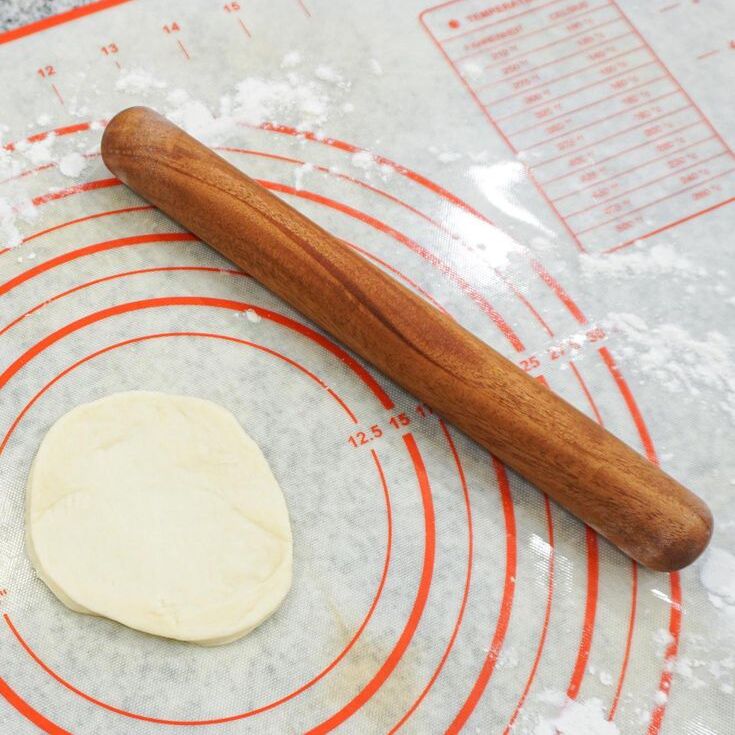
Understanding the Importance of Even Dough Thickness
When making dumplings, achieving even dough thickness is vital for various reasons. First and foremost, consistency ensures that the dumplings cook evenly. Thin spots in the dough can lead to overcooked and chewy areas, while thicker sections may remain undercooked. This inconsistency negatively impacts not only the texture but also the overall tasting experience of your dumplings.
Moreover, uniform dough guarantees that the wrapper properly holds the filling. If parts of the dough are too thin, they can easily break during the cooking process, causing the filling to leak. Conversely, overly thick wrappers may overpower the flavors of the filling, making it difficult to achieve the right balance. Therefore, dedicated attention to the thickness of the dough paves the way for delicious, aesthetically pleasing dumplings that shine during any meal.
Using a dumpling rolling pin offers several advantages in achieving that ideal thickness. These specialized rolling pins are generally shorter and often have a tapered design, allowing for more concise control over the rolling process. With the proper techniques, you can make uniform dumpling wrappers that enhance your culinary creations.
Choosing the Right Dumpling Rolling Pin
Before diving into the techniques for achieving even dough thickness, selecting the correct dumpling rolling pin is essential. Various materials and designs exist, each offering unique benefits that can affect your rolling experience. Common materials include wood, marble, and silicone.
Wooden Rolling Pins: Wooden dumpling rolling pins provide a traditional feel and are typically lightweight, making them easy to maneuver. They often come with a smooth finish that helps prevent dough from sticking. However, ensure your wooden pin has been properly treated, as untreated wood can absorb moisture and odors.
Marble Rolling Pins: Marble rolling pins are heavier, which allows for more consistent pressure when rolling out dough. Their cold surface helps keep dough chilled, preventing it from becoming overly sticky. However, their weight can make them less suitable for younger or less experienced bakers.
Silicone Rolling Pins: Silicone rolling pins are increasingly popular due to their non-stick surface, which prevents dough from adhering. Lightweight and easy to clean, silicone options offer flexibility and are ideal for kids in the kitchen. However, some bakers find them less stable than wooden or marble alternatives.
Ultimately, the choice of dumpling rolling pin depends on personal preference. As each type has its pros and cons, consider your baking style and the intricacies of your dumpling preparations when selecting the best tool for your needs.
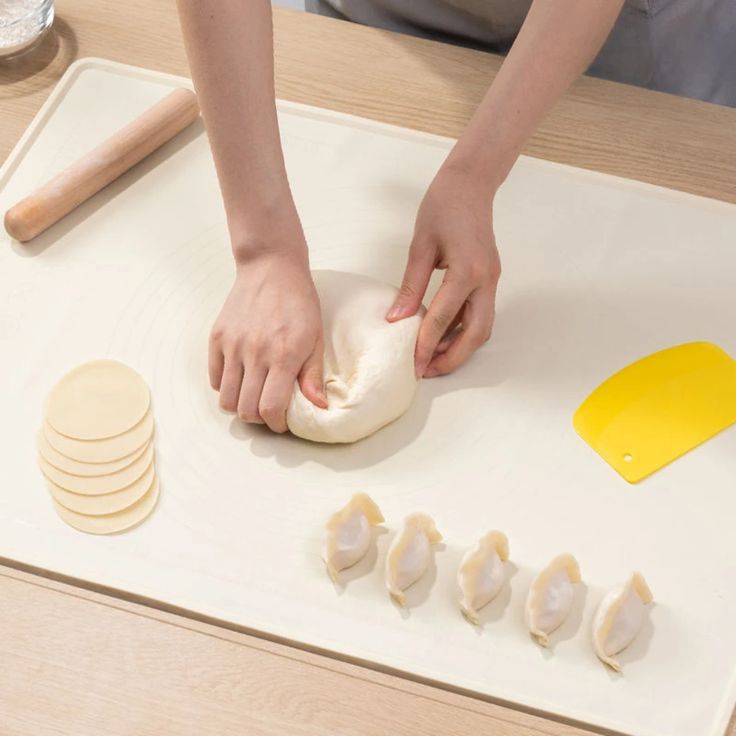
Preparing Your Work Surface and Ingredients
The foundation of achieving even dough thickness begins with proper preparation. Before rolling out your dumpling wrappers, ensure your work surface is clean and dusted with flour. A well-floured surface prevents the dough from sticking and allows for easier maneuvering.
Next, prepare your dough according to your recipe. Typically, dumpling dough consists of flour and water, mixed to the right consistency. Allow the dough to rest for at least 30 minutes after mixing, letting the gluten relax and making the rolling process smoother. During this time, cover the dough with a damp cloth to prevent it from drying out.
Divide the dough into manageable portions before rolling. Depending on your dumpling size, cut the dough into small pieces, roughly the size of a golf ball. By working with smaller portions, you reduce strain on yourself and minimize the likelihood of uneven thickness. Each piece can be rolled out individually, allowing for consistent control over thickness as you progress.
The Rolling Technique: Achieving Uniform Thickness
When it comes to rolling out dumpling wrappers, technique plays a vital role in achieving even thickness. Start by flattening your dough piece slightly with your hands before introducing the dumpling rolling pin. This initial step reduces the amount of effort required when rolling, making it easier to achieve uniformity.
Use Gentle Pressure: Employ light, consistent pressure as you begin rolling. Start from the center and move outward, applying even force. Rolling too aggressively can lead to thin spots, while inadequate pressure can result in uneven thickness.
Rotate the Dough: To promote even rolling, regularly rotate the dough as you work. This practice ensures that all areas receive equal attention, preventing the dough from sticking to the work surface. Rotate the dough a quarter turn after a few rolls to maintain symmetry.
Check Thickness Frequently: As you roll, take a moment to evaluate the dough’s thickness periodically. This practice allows you to identify any inconsistencies as they arise, making it easier to adjust your technique promptly. Strive for a thickness of about 1/8 inch for standard dumpling wrappers, but remember that some recipes may call for different thicknesses.
Utilize Your Dumpling Rolling Pin’s Design: The tapered design of a dumpling rolling pin allows you to control pressure effectively. Focus on the thinner end of the rolling pin to roll out the outer edges, while the heavier end can be used for the center. This approach helps you achieve the perfect thickness uniformly throughout the wrapper.
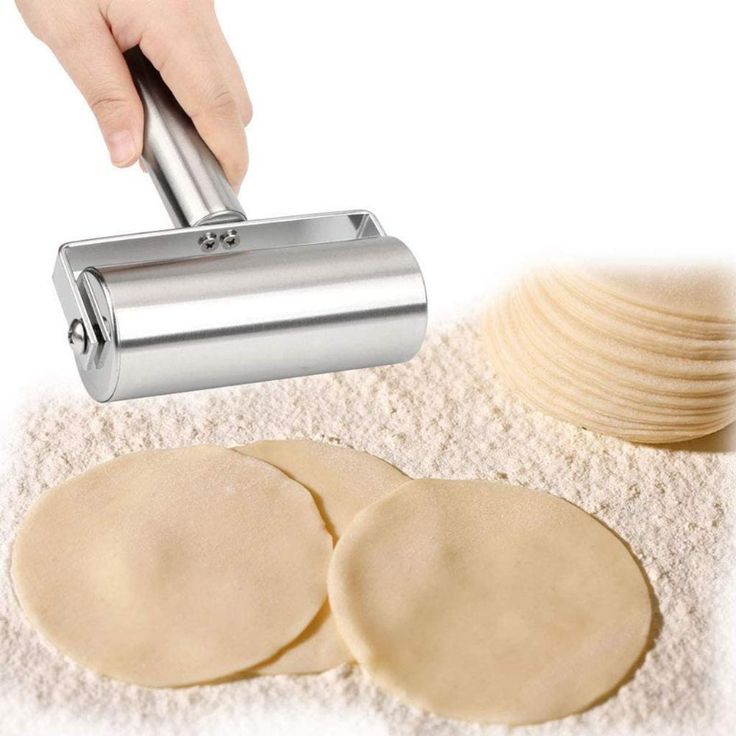
Techniques for Maintaining Dough Consistency
Creating even dough thickness requires attention to consistency during the entire rolling process. For best results, incorporate the following techniques to maintain the dough’s quality.
Keep It Floured: A major cause of sticking while rolling is flour accumulation. If you notice that your dough begins to stick to the pin or the work surface, sprinkle a bit of flour on both surfaces. This technique prevents the dough from clumping and allows for smooth rolling. However, avoid excessive flour, as this can alter the dough’s texture.
Use a Dough Scraper: If any pieces of dough start clinging to the work surface, utilize a bench scraper to lift them carefully. Keeping the dough free-moving is essential for achieving an even thickness. This tool can help you re-flour the surface as needed while making cleanup easier.
Monitor Temperature and Humidity: Dough consistency can vary based on temperature and humidity levels in your kitchen. Warm conditions can cause the dough to become stickier and harder to work with. If you find that your dough is too tacky, consider refrigerating it for 10–15 minutes to allow it to firm up before rolling.
Rest Between Rolls: When working with large quantities of dough, consider resting your dough between rolls. Allow any pieces you don’t immediately work with to sit for a few minutes to give the gluten a chance to relax. The dough will roll out more smoothly and evenly after resting, which ensures successful outcomes.
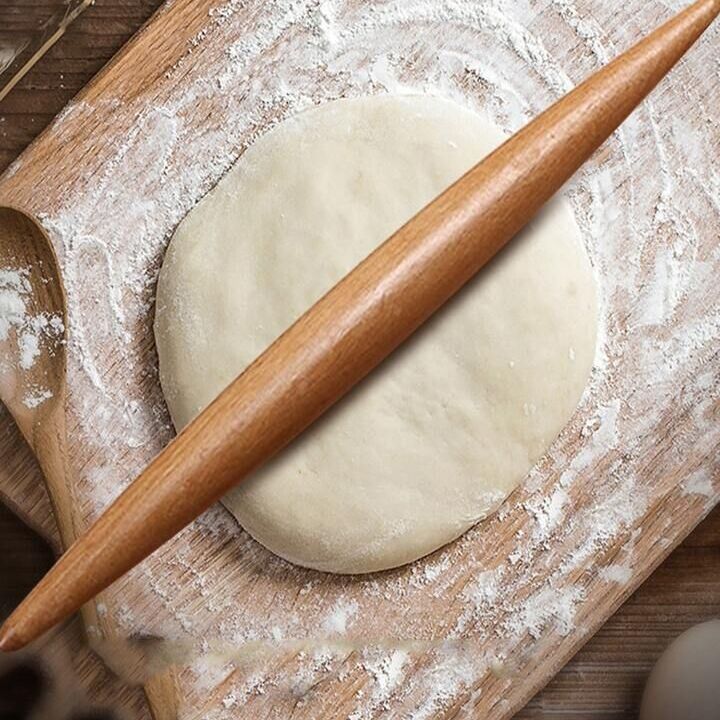
Creating Dumpling Wrappers with Flair
Achieving even dough thickness is crucial, but why not add an extra layer of creativity to your dumpling-making process? After rolling the dough to the desired thickness, consider experimenting with different shapes and sizes for your dumpling wrappers.
The traditional round shape might be your go-to, but playful shapes like squares or hearts can bring excitement to your dumpling-making sessions. Using cookie cutters, you can create unique wrapper shapes that stand out on the plate. Encourage kids to design their wrappers and explore the creative possibilities—this fosters fun and engagement in the kitchen.
Decorative Techniques: Impress your guests by decorating your dumplings with added flair. After rolling out your wrappers, you can use the prongs of a fork or the edge of a knife to create decorative patterns along the edges. This technique adds elegance to your dumplings while reinforcing the even thickness throughout.
Flavor Infusions: Consider infusing your dumpling wrappers with unique flavors by incorporating simple ingredients like beet juice for pink wrappers or spinach juice for green ones. While rolling out these flavored doughs, ensure that the thickness remains uniform to maintain the quality of the finished dumplings.
Cooking and Storing Your Dumplings
Once you’ve rolled out your dumpling wrappers and filled them, it is crucial to employ proper cooking techniques to preserve their integrity. Steaming, boiling, or pan-frying are all popular cooking methods that yield delicious results. Regardless of your selected cooking style, ensure that your prepared dumplings maintain their shape, properly showcasing the even thickness of the wrappers.
Steaming: Steaming dumplings results in a soft, moist texture. Layer parchment paper in your steamer basket to prevent sticking and place the dumplings carefully in a single layer. Ensure that there is adequate spacing to allow steam to circulate. After steaming, you’ll notice how beautifully the even thickness enhances the dumpling’s overall appearance.
Boiling: When boiling, never overcrowd the pot. This practice enables even cooking and avoids clumping. Once the dumplings float to the surface, they usually require a couple of additional minutes for optimal doneness. An even thickness in the wrappers translates to a consistently cooked dumpling, ensuring you achieve the ultimate flavor profile.
Storing: If you wish to store your unfinished dumplings, ensure they have cooled completely before placing them in an airtight container or freezer bag. By layering parchment paper between each layer, you prevent them from sticking together. Proper storage can maintain the integrity of your dumplings, allowing you to enjoy them later without compromising texture.
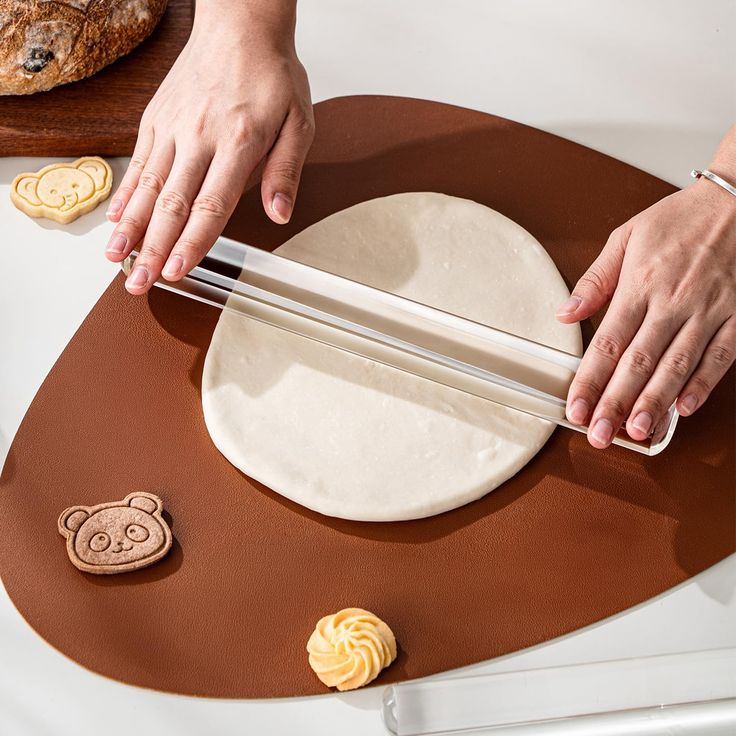
Conclusion: Embrace the Art of Dumpling Wrapping
The art of making dumplings requires practice, patience, and proper tools—chiefly, a reliable dumpling rolling pin. By focusing on achieving even dough thickness, you can elevate your dumpling-making process and create delicious, visually appealing results. Embrace the techniques outlined in this guide to master your rolling skills and craft beautifully uniform dumpling wrappers.
Investing time in developing your rolling technique pays off in the form of perfectly cooked dumplings that impress your family and friends. As you experiment with various flavors, shapes, and cooking methods, you foster a joyful cooking environment filled with creativity.
With each dumpling you make, you celebrate the rich culinary traditions that have been passed down through generations. Embrace the journey of dumpling making, and let your dumpling rolling pin become an empowering tool in your kitchen. Ultimately, the satisfaction of rolling out even dough and crafting delightful dumplings strengthens both your culinary skills and cherished memories shared around the table.

